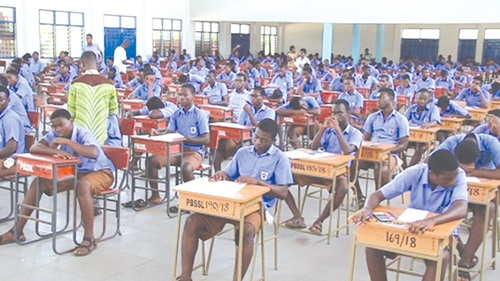The challenges confronting the secondary education curriculum are critical and diverse.
In the past three decades, the secondary education system has implemented a curriculum that is elitist (or bookish) and narrowly focused on the subject content with little emphasis on the cross-cutting essential learnings that can develop the combination of basic knowledge, skills and core competencies needed to promote sustainable development.
In the inclusive free SHS system, students of all abilities, including those with special needs and those from diverse backgrounds, including poor parents who cannot afford it, those living in disaster areas, and those living in remote or hard-to-reach areas, attend the same type of schooling.
They are provided with equitable opportunities to obtain qualifications and training.
The inclusive free SHS system is a way of transforming the education system to respond to the diversity of learners through the adoption of an inclusive education curriculum.
This is a curriculum that aims to ensure that a school is a place where all students participate and are treated equally.
Curriculum differentiation and national minimum standards and assessment benchmarks are key to inclusive education.
Minimum competency differentiated exam
In fact, not all the free SHS students qualify to take the WASSCE because it is largely a university entrance examination and secondary education is not intended to prepare all students for tertiary education.
The WASSCE tests largely academic knowledge for identifying the academically capable students who can cope with further and tertiary education programmes; for that reason, many students at the lower end of the stretched ability band will find the examination difficult and perform poorly in it.
The Pre-tertiary Education Curriculum Framework (PTECF) proposes the institution of a National Assessment at each of the four phases of pre-tertiary education – lower primary, upper primary, junior high, and senior high, according to NaCCA.
The aim is to provide evidence for checking the extent to which learners are meeting the expectations set by the curriculum for each phase, to help make decisions on the progression of learners to the phase above and ensure learners receive compensatory provision where applicable.
Proposals for inclusive exit exam for SHS
To ensure the free SHS products have an option for an examination, which is deliberately set at different levels of difficulty to meet their learning needs (particularly of those in the lower 50 per cent segment of the stretched ability band), we present the following three reform options for consideration.
The Ministry of Education has to negotiate with WAEC to revise the WASSCE to use the differentiation between papers approach, which is used in the UK General Certificate of Secondary Education (GCSE) examination, in order to produce a good range of scores, which will adequately discriminate between the academic abilities of the bottom 70 per cent of candidates who will be completing the free SHS.
With this option, there will be only one examination for all candidates, which will continue to be held in the second term of the final year.
This is a difficult option, because WASSCE is an international examination, and the other participating countries do not have the peculiar problem Ghana is currently experiencing.
In this option, all students in the free SHS must sit the proposed Ghana Senior School Leaving Certificate Examination (SSLCE) at the end of the second year.
Those falling within the top 40% segment of the ability band and, for that matter, have the potential to pursue tertiary education can be made to continue the third year to write the WASSCE (still under Free SHS).
This option is for students who decide to leave school at age 17, without pursuing further academic study towards qualifications such as WASSCE or a university degree.
Sitting for the proposed SSLCE is compulsory, and the certificate should be accepted for further vocational training, apprenticeship and entrepreneurship programmes (also with government support) or in the world of work.
With this option, all the students will do a three-year secondary education, after which all of them will write the Senior School Leaving Certificate Examination (SSLCE) at the end of the first semester of SHS Three.
Those who can will prepare and write the WASSCE in the second semester, which is the university/tertiary entrance exams.
It must also ensure that the SSLC has grades equivalent to the WASSCE grades, to make it mandatory for tertiary institutions to accept the qualifications for admission into programmes that do not require rigorous academic work.
Recommendation
Secondary education provides a specific set of competencies and skills that enable students to participate in the knowledge of society.
In addition to driving economic growth and reducing poverty, it can also contribute decisively to social cohesion and civic participation by increasing individual propensity to trust and be tolerant, thus enabling young people to become active members of society.
But achieving these tenets requires the implementation of relevant curriculum and assessment imperatives that support equity and inclusivity with recommendations such as ensuring a good balance between the development of a combination of knowledge, skills and core competencies that support the students’ identity development and their ability to live in a sustainable way.
Developing an open and flexible curriculum that allows for different learning styles and content that makes the curriculum relevant to learners and society, and also allows for the localisation of the contents to provide greater flexibility for teaching and learning to be adapted to the community’s local materials, values, social and entrepreneurial activities.
Writer is a PhD candidate, University of Ghana and a Chartered Policy Analyst (CPA)
Email: kashiagbor@yahoo.com)

